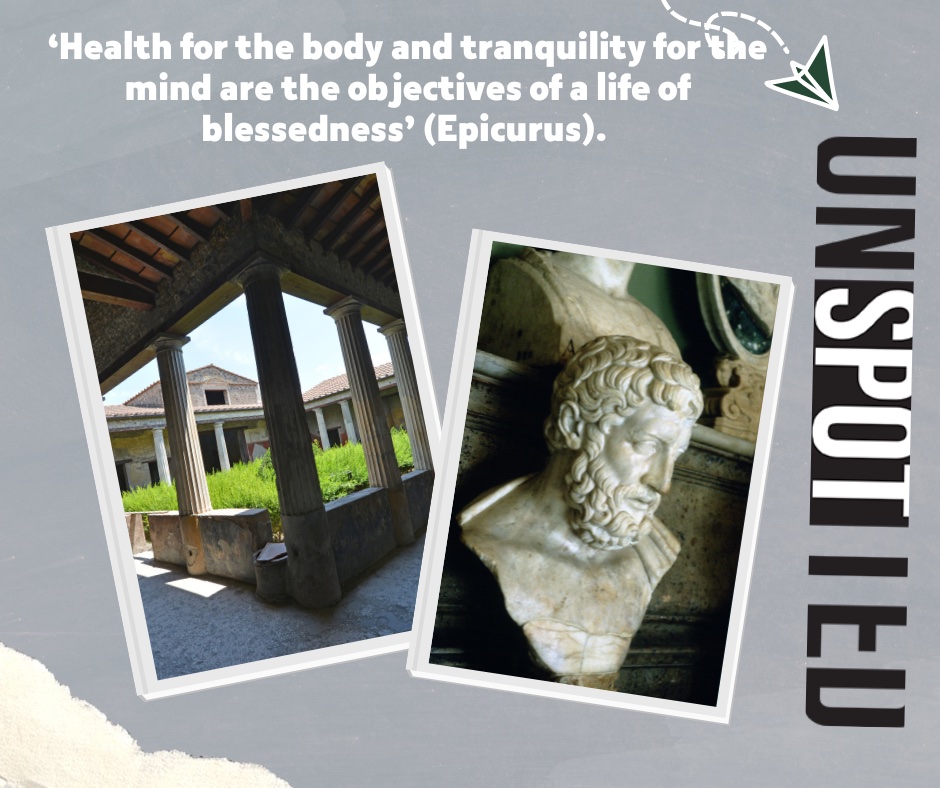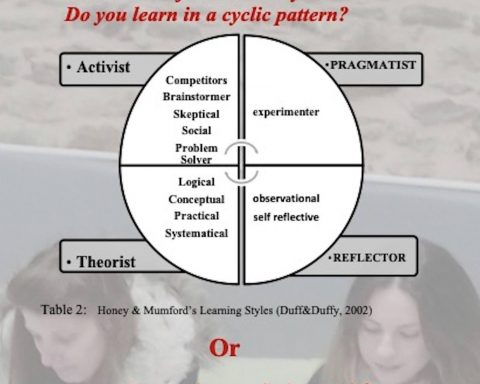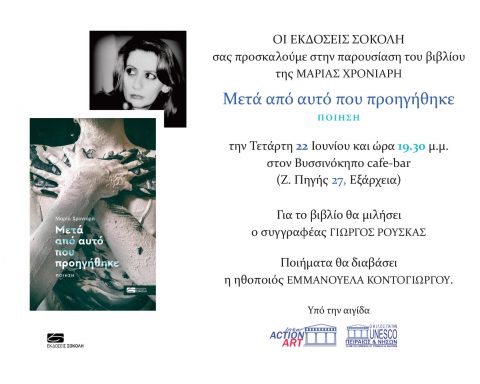Epicurus’ idea of leisure, as a time of escapism from work and troubles in order to relax and achieve ataraxia with moderate intellectual activities combined with a healthy way of life in order to enjoy leisure, has been reflected to a greater or less extent in the ancient times and the modern ones. Roman villas, the emergence of seaside as a place to have fun and acquire health in the Victorian era, sports activities and music have been ways in order Epicurus’ objectives, health in body and peace of mind, to be pursued through time.
Epicurus believed, as well as Aristotle that leisure is of an outmost importance in people’s life and they both tried to give a definition through ethical and metaphysical questions. However, one important difference that has social implications is that Epicurus believed that anyone is entitled to a healthy and tranquil life in contrast to Aristotle who supports that only “excellent people “can appreciate and enjoy leisure productively, through intellectual activities. Epicurus believes in health and pleasure and although he has been associated with extreme hedonism (Price, 2008,p 23) he was actually in favour of “all things in moderation”. “A modest meal or a conversation with friends” (Vatican Sayings, 66 in Price, 2008, p.23) and “pleasure can be found in simple things”(Price, 2008, p 23).
A very good example of Epicurus’s theory on the pursuit of happiness is the Roman villas in the ancient Roman times. Although the Roman’s objective was the “otium” (Lovatt speaking in ‘Aetatem tibi agere’,2008,Track 2) through escapism in the country where they could practice all what Epicurus regarded as means to obtain blessedness such as moderate meals, intellectual activities and healthy lifestyle, those were implemented in a considerable extent, which later deviated due to the extreme materialism and abuse from the elite, as we can conclude from the remaining literature of Horace, Pliny the younger and others and the mosaics preserved in post roman villas as well as the remains of the old ones,. However, there are concerns whether these sources are representative since they only describe the elite’s life leisure.
According to Horace’s descriptions, Rome’s way of life in the city centre was far from what Epicurus considered blessed. “I ‘m far removed from the throng around the greasy pole” (Reading 3.1 in Huskinson and James, 2008,p87) .His abhorrence for the city is quite obvious in his writings and he is restless to flee to his farm in the country. Horace was influenced by Epicurus philosophy regarding the pursuit of happiness to a great extent and his example followed other roman elite members. In Satires (Book 2,p.6,3.1 , in Huskinson and James,2008, ) the ideas of blissfulness through the company of friends, constructive conversation, drinking and dining and reading are reflected throughout the text: “drink away life’s worries” ,”mild relaxing wines”, “free to read the classics”. Horace desires eudemonia and ataraxia and he regards his farm a place of tranquility where he can achieve these objectives and be able to focus on more important for him issues like “whether money or morality makes men happy”. However, while Epicurus believes in moderation, Horace seems to indulge himself in drinking and eating most frequently and constitutes them as a measure of affection and social intimacy (Lovatt speaking in ‘Aetatem tibi agere’,2008,Track 3).
While in the city, Roman’s pace of life was fast and laborious their leisure was defined by the emperor who manipulated the crowds promoting certain kinds of entertainment such as gladiator games, baths, rituals or festivities, chariot races and dining in restaurants located around the Coliseum (Lovatt speaking in ‘Aetatem tibi agere’,2008,Track 2). This hustling and bustling lifestyle was far from Epicurus’ concept of leisure and far from the elite’s as stated by Lovatt (James; Price, 2008). Therefore, the Roman villas were built to cover the need of the aristocrats to obtain otium. They were remote, isolated, and picturesque closer to the sea and decorated with mosaics and paintings that reflected the serenity of the physical environment inside the villa. The wealthier the owner, the more luxurious the villas.
Pliny the younger’s description of his villa also reflected Epicurus philosophy at a greater extend than Horace. Horace did not emphasize exercise and he abused alcohol while Pliny’s life at the country was filled with moderate intellectual activities, exercise, conversations with friends, time to rest and sleep. Sentences from his description witness his feelings on leisure: “detached from any distractions”, “short sleep”, “siesta”, “varied conversation”, “exercise and have bath”, “go hunting”. He goes even further as to combine all these physical activities also involving horse riding, with reading. “Don’t look down on the mental activity of this kind, for it is remarkable how one’s wits are sharpened by physical exercise” (Reading 3.4 in Huskinson and James, 2008, p.94)
Pliny’s villa was located near the sea in the country and included all the necessary facilities to reach otium. It had a gymnasium, a bath suite, an atrium, a ball court and gorgeous gardens that could create the feeling of tranquility and it was perched upon a spot where there was view of the sea, the mountains and the forest. (James in Price, 2008).
From the materialistic world off the Romans where leisure turned into a competition among the elite, related to the size and location of their country villas as well as the diverse city and abundance of art through wall decoration painting and mosaics as we can observe from the remains of the Bradding Villa and some influences in the 18th Century architecture (Lord Burlington’s villa at Chiswick) the focus of the hedonism became the escapism to the sea with musical activities depicted in various cultural ways.
Seaside continues to be an important part in people’s leisure time especially during the 20th century. In the previous centuries bathing was a formal therapy suggested by physicians. The congestion and polluted air of the town as well as the hectic pace of life contributed to the pursuit of the healthier lifestyle that could only be found in the seaside resorts. In the 20th-century sea water exercise and sports emerged and the leisure’s main focus was on physical exercise. Epicurus’ philosophy once again started to be implemented to a certain extent given the rise of middle class and the era of industrialization. The belief was “building muscles and character”(Brunton, 2008,p.172). While there were many sports considered both “fun and good for health” (Brunton, 2008,p.175) like tennis, golf, hiking and so on, the most popular and accessible to all social classes and especially the middle one, was swimming. Leisure became connected to many social issues as well as the emancipation of women. Women were portrayed to enjoy sports and sunbathing in advertising posters of seaside resorts. In the poster 4.28 (Brunton, 2008,p176) a woman, dressed in 20th Century clothing, is enjoying playing golf a manly-occupied sport, right next to the seaside. There are quite many contradictory elements in this poster. The dark colors of sky and the clouds and the narrow tonal range of the poster as will the movement of the woman’s skirt imply windy, moody weather, which is typical of Scotland’s and Britain’s in general weather, that creates a dramatic, atmosphere and it completely contradicts the people sunbathing at the seaside. The main idea of the poster is to promote golf but the depiction of the seaside, which was considered an attraction pole at this time, makes the idea of golf courses more attractive to the consumer who wanted to pursue the tranquility and healthy lifestyle that seaside resorts, swimming and sunbathing offered. So this poster completely combines “‘health for the body and tranquility for the mind”. (Epicurus in Price, 2008,p.33)
Another poster advertising a lake resort in Scotland is portraying the same contradiction. While the picture plane has a narrow tonal range reflecting a dramatic atmosphere and a subdued mood typical of Scotland’s depressing weather, the picture plane of the painting is completely different. The warm colours create a happy atmosphere of serenity and fun and a sense of a hot summer. The people in the poster are extremely tanned which was an indicator of “wealth, glamour and leisure”(Brunton, 2008 p.177).
Music has been associated with leisure on the seaside since Victorian times. There is lots of evidence of the seaside culture from songs like “I do like to be beside the seaside”. Music started to initiate the working class which had been excluded from seaside leisure activities in the past embracing more Epicurus’ idea that leisure is for everyone even the animals. The simple narrative encompasses the listener to visit the sea. “Everyone delights”, “I’m no exception to the rule”, there’s lots of girls beside”. (Herbert, 2008,p.107-108). The” catchy tune” and “the foot – tapping rhythm” (Herbert, 2008,p.107). certainly passed the message to the masses.
A whole seaside industry started to be created and from the Beach Boys’ “Surfin’ U.S.A” the seaside resorts turned into a dangerous and violent place certainly away from the feeling of ataraxia and physical exercise. The music, which was associated with seaside leisure, became also associated with cultural and social identities therefore the cultural clashes were transferred to the seaside, which by that time it was a fun place to be.
A very good example of how seaside resorts are viewed in the modern multicultural Britain is the film “Bhaji on the Beach”(1993). Three generations of Asian British women decide to escape to Blackpool, which the oldest relates it, at some point, to Bombay, decide to escape from their problems that their identity not only as Asians but also as women has created. In Asha’s dream, for example, her ideas of blissfulness and romance are connected with escapism in an idyllic place. Unfortunately, the cultural and social clashes at the resort fail to give them the leisure they want. While the female protagonists of the film try to negotiate the roles as women and Asians, the obstacles are plenty. The hooligans bullying them at the petrol station trying to shock them by exposing their behinds as well as the males’ attempts to retune the women’s transistors according to their taste are evidence of the clashes prevailed in British seaside. Relaxation and physical activity once again become a competition as women try to become visible. Adding spices to their chips after having disapproved it through rude and comic, at the same time, facial expressions or Hashida’s aggressive reaction to the rude café owner are statements of their right to be by the seaside, with no exceptions.
As it can be concluded, leisure can differ from time to time, can be constructed and can be influenced by social, cultural, political factors. In the ancient times only the elite could enjoy what Epicurus stated “health for the body and tranquility for the mind” for all and as time progressed, the balance between these objectives changed to a more or less degree.
REFERENCES
‘Aetatem tibi agere – a Discussion with Lovatt and Brundon(2008)
Bhaji on the Beach DVD by Gurinder Chadha (Director), Channel Four Films.
Brunton,D., Herbert,T., Harrison,C., Faire,L. ,Chant,C., Jones, N., Danson Brown, C. and Baldwin, C. (2008) ‘The Seaside’
James,P. and Huskinson, J. (2008) ‘Leisure in the Roman Villa’
Pike,J. and Price, C. (2008) ‘Leisure, Purpose and the Meaning of Life’






